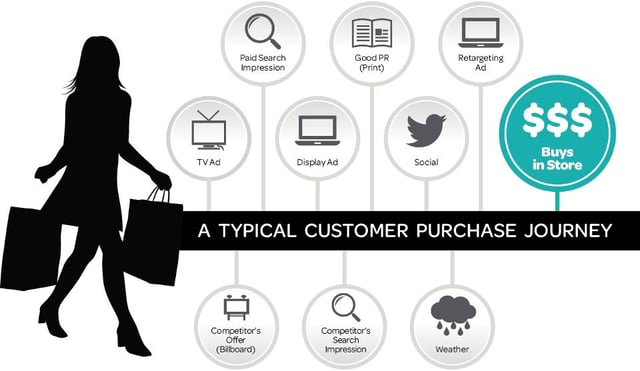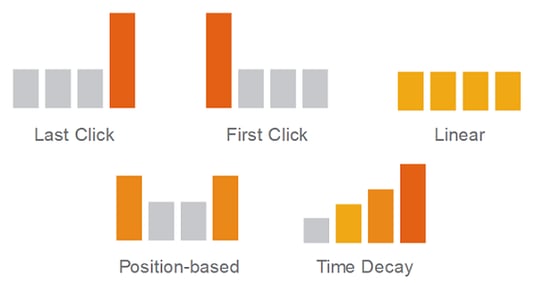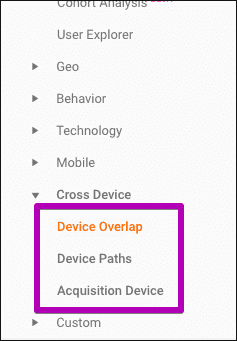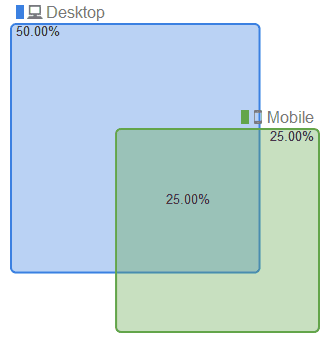Don't let implementing an attribution strategy block your path to ROI. Good digital sales strategies for the outdoor industry include an attribution component. I am here today with Amanda Daume, Director of Revenue River's Sales Enablement Department. Amanda pioneers the company's use of "best of breed" technology to assist clients in maximizing the results from their spend on digital marketing resulting in paying customers that are satisfied. We are going to talk about this the concept of "attribution" and the tools needed to execute on it in today's omni channel marketplace. Amanda, thanks for sitting down with me today.
In today’s more measurement-focused marketing world cross-channel attribution is a hot topic. Briefly, this is the science of using advanced analytics to allocate proportional credit to each marketing touchpoint across all online and off-line channels, leading to the desired customer action.
That’s basically how Forrester defined it in The Forrester Wave: Cross-Channel Attribution Providers. Put more simply, “giving credit where credit is due." Attribution helps outdoor brands brands track their marketing and media efforts more accurately and show how they impact the overall business.

Outdoor Compamy Sales Enablement Strategy
R- Let me start by asking you to give our viewers a quick rundown of what "sales enablement" is and where it fits into sales enablement for outdoor companies?
A- At its core, sales enablement is the strategic alignment of a brand's technology, processes, and people in order to create a tailored buying experience for their potential customers. Consumers in the modern age expect the ability to make purchases on their own terms, whenever and however is convenient for them. Brands in the outdoor industry, in particular, have tremendous digital opportunities to go where their audience is to provide delightful journeys from the point of brand awareness to brand evangelism.
R- Although most outdoor industry business leaders look first to others in the industry for assessing what is trending on the being cutting edge with new products, designs, processes and customer engagement, sometimes it's really worth looking at how "legacy" manufacturers in the U.S. have adapted and are strategic planning to be relevant in this digital age. For example, take General Electric. I know you have studied some on their evolution and read an enlighting article by Beth Comstock, CMO of GE, explaining how digital technology is creating an ever-growing number of touchpoints that connect companies with consumers.
A- Yes, consumers now have a multitude of digital touch-points to interact with your company. What used to be a single-channel experience for a customer to shop your company online and make a purchase is now one that spans numerous on line and off line channels. This is called omni channel marketing. It refers to a strategy where brands create personalized, contextually relevant experiences for each customer, across online and offline channels, as well as across devices. Not only is it imperative to create a seamless experience for the consumer across these diverse, multiple channels, you must understand where and what motivated the consumer to convert to a customer. In order to do this, you must be able to track attribution. Marketing attribution management helps provide the answer.
Omnichannel Attribution Models
R- Define what is an omnichannel attribution model?
A- Let's start with how Google defines it for their analytic model. "An attribution model is the rule, or set of rules, that determines how credit for sales and conversions is assigned to touchpoints in conversion paths. For example, the Last Interaction model in Analytics assigns 100% credit to the final touchpoints (i.e., clicks) that immediately precede sales or conversions."

R- Why should an outdoor industry company be concerned about developing a good attribution model?
A- Marketers and their C-suite personnel want to know how they can determine ROI for their spend across devices, publishers, channels, and media. An omnichannel attribution model first relies on understanding and uniting your consumers into a single anonymous ID. Ultimately, the goal of this model is to tie all these channels to a real-world purchase, so an outdoor recreation manufacturer can understand and optimize their media mix to attract and convert consumers to customers.
R- What does it take to create an attribution model for today's omnichannel company?
A- All omnichannel experiences will use multiple channels, but not all multi-channel experiences are omnichannel. Remember that. You can have amazing mobile marketing, engaging social media campaigns, and a well-designed website. But if they don’t work together, it’s not omnichannel. The most important aspect of creating onmnichannel attribution is weaving together all of the individual consumer's interactions with your various channels into a singular identification persona that will represent them across all their channel interactions.
R- So if you have to create a unique customer id how does one develop it?
A- The first step is to focus on the medium that provides you with the best chance at understanding each consumer individually — and mobile is perfect for that. Enabled by device IDs, mobile advertisers can understand and contextualize each consumer’s mobile journey. A unique identifier can unite fragmented data from publishers and devices across mobile apps and the mobile web to provide a consistent canvas on which we paint our consumer personas. By understanding a consumer’s physical and digital mobile journey, you can compile unique and accurate consumer personas.
R- Time-out, break this down for me, please?
A- The foundation of cross-channel attribution involves matching unique devices to location. How exactly does this work?
Simply put, every time a consumer sees an ad, the ad sees a little bit of the consumer. When you develop an ad for use with mobile apps, you attach a unique device ID, geo-location, and several other valuable attributes. This makes it relatively simple to attribute a persona with location-based attributes for in-app advertising. For the mobile web, where a device ID is not passed, it’s more complicated and it involves matching up other attributes over time in order to link a persona to attributes generated from the mobile web.
R- Why again is this important?
A- The goal for marketers is always to follow the path consumers took to a completed sale. But how do you accomplish that?
Performance marketers have known for a long time that measurable ROI is possible through digital marketing. Agencies and brands are catching up more and more every day. Any purchase that can be made digitally can quite easily be tracked by a platform through the use of a straightforward server to server call. This call alerts your systems to the completed purchase and lets you track back the attributes that led to this particular purchase. So, then you can optimize towards this kind of consumer persona in the future. The more information can you can collect the more you will be able to produce ROI. For outdoor companies that sell goods and services at physical locations have fewer options, but can still use tactics such as redeemable coupons and promo codes that link back to specific marketing campaigns to attribute sales and ROI to marketing efforts.

R- Is attributable ROI a realistic goal for all advertising?
A- Being able to completely and cohesively determine a companies ROI across it's spend for all forms of marketing is the ? for results driven company executives. Although the intersection of all these new technologies that provide the data needed do not yet form a complete circle, it is critical for outdoor industry C-suite leaders to have adopted the mindset that this is where they want to be and are demanding cutting-edge technology implementation to push the boundaries of what is possible for the them achieve regarding customer attribution data.
R- Do you have any examples of companies who provide great omnichannel user experiences?
A- Yes, HubSpot has an excellent blog article on this very topic. They cite REI from the outdoor industry segment, Disney, Virgin Atlantic and several others. It's worth the read.

R- Do you have a couple of resources for viewers who want some more information on the basics of the various attribution models out there?
A- Yes, one is Google has a lot of good basic information. I also read an article in Digitaltech that nicely outlined the pros and cons of the top 5 marketing attribution models.
Here is a list of the primary attribution models:
- Last Non-Direct Click Attribution (Google’s default)
- Last AdWords Click Attribution
- Last-Touch Attribution
- First-Touch Attribution
- Linear Attribution
- Time Decay Attribution (Great starting point)
- Position Based Attribution (Ideal level-up)
- Custom Attribution (When you know your analytics and trends + customers inside out)

Image Source: Google
Attribution Really Should Matter
R- In closing, Amanda, would you summarize the main take away point for those in the outdoor industry listening today?
A-
- Channel Attribution REALLY Matters -
If you’re assigning “attribution identifiers” to channels in a way that is not logical and matches your brand strategy and works within your technology stack, then it will be impossible to accurately determine what channels are delivering the best results and allocating more investment based on measurable ROI.
If not, it doesn’t matter if you're tracking implementation is "state-of-the-art"; your data will be misrepresenting customer behavior.
- There is no right or wrong attribution model for your company to implement -
What is critical is committing to the implementation of this tool and implementing a set of tools that align with your company's unique digital brand strategy and data. Acquire only the tools immediately valuable to your bottom line.
Select tools that are able to “talk” to each other for accurate analysis, attribution, and action (Zapier is a widely-used connector if all else fails)
- There is no short-term in developing an attribution model to implement -
Develop a system to build from. If you are trying to implement an attribution model, make sure you are starting with an eye towards the mid-to-long run. If not, experience shows people keep switching models and their attribution tracking goals get skewed due to a "shifting sands base of data." None of what we have discussed are quick fixes or can be deployed without intense planning and resource.
- Really prepare for implementation -
Implementing multiple tools and/or platforms at once will likely cause major headaches — build up your arsenal over time, starting with the most valuable. Make sure your implementation takes into account the need for seamless connectivity between platforms. Otherwise, your future will likely yield ugly surprises that cost you more time and money. Research and test. Finally, make sure you plan for and demand your vendors can and will migrate from one to another. Don't underestimate the time. Build migration into your contracts.
Once you are using optimal attribution modeling, the multi-channel funnels report and also User IDs — the multi-device, multi-channel jigsaw puzzle gradually begins to piece together.
That said, here are more handy reports to grab from Google User Analytics:
The ‘Device Overlap’ report also creates a visual representation of your data:

The ‘Device Overlap’ report also creates a visual representation of your data:

R - Thanks Amanda



